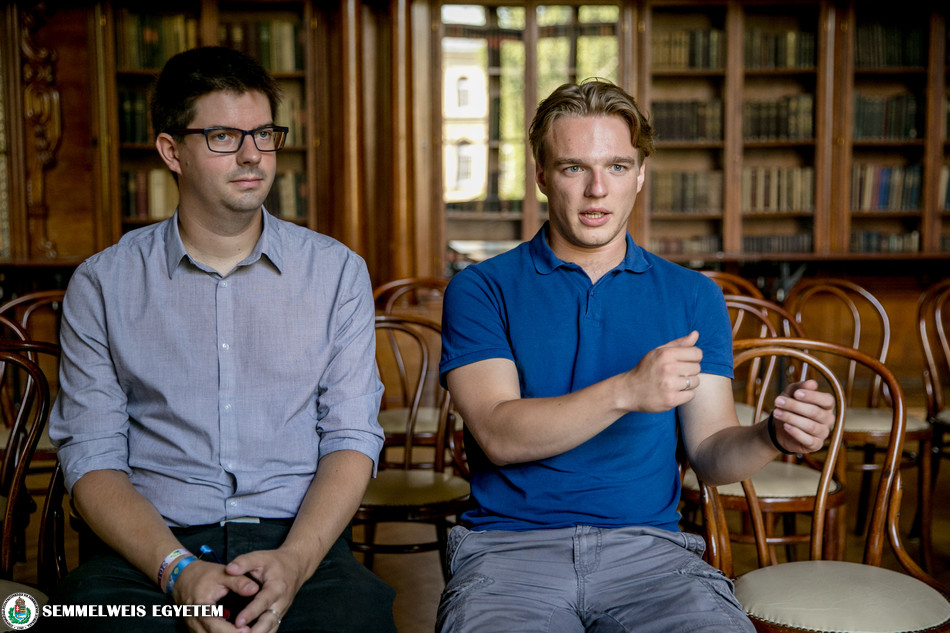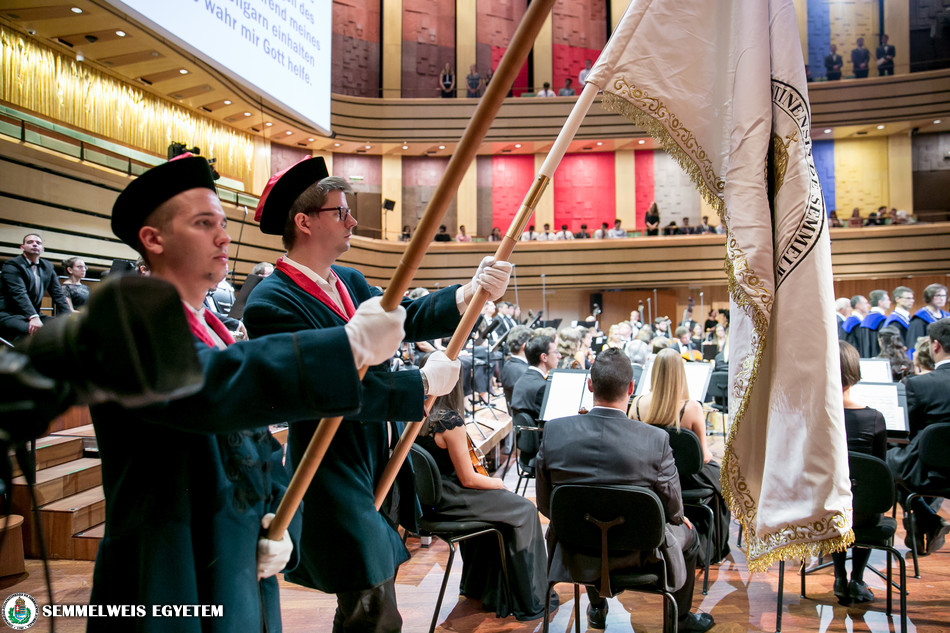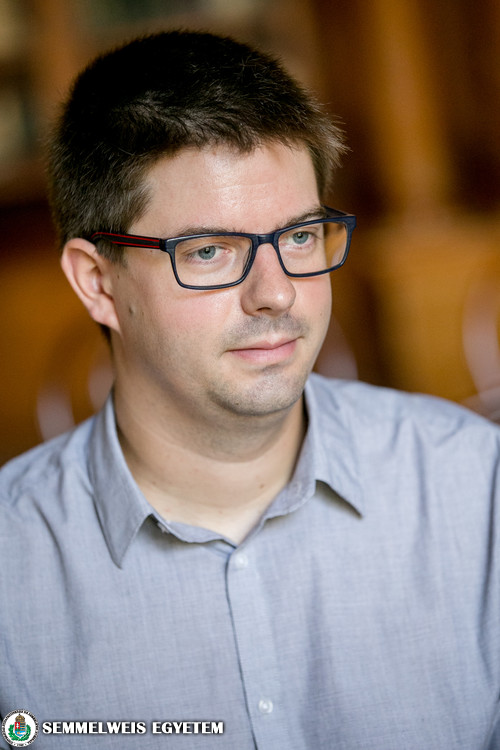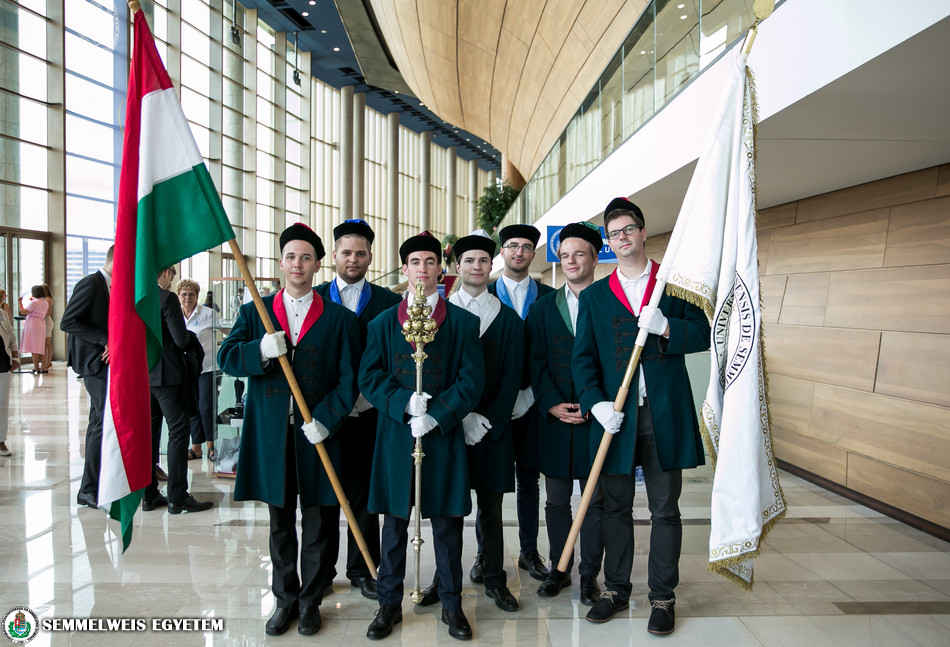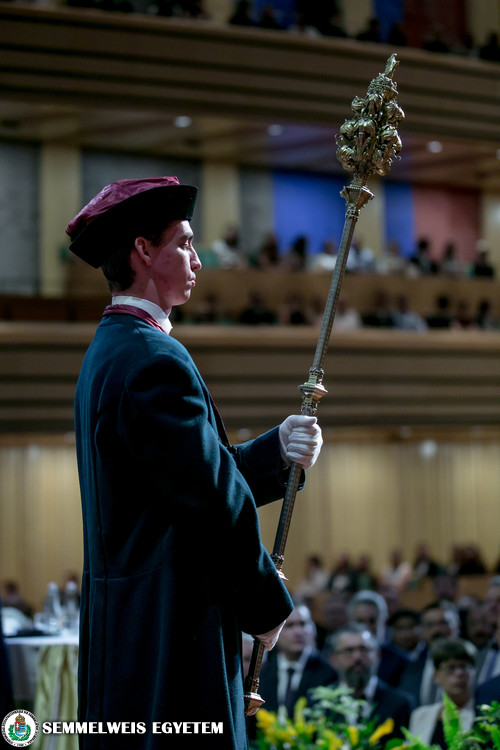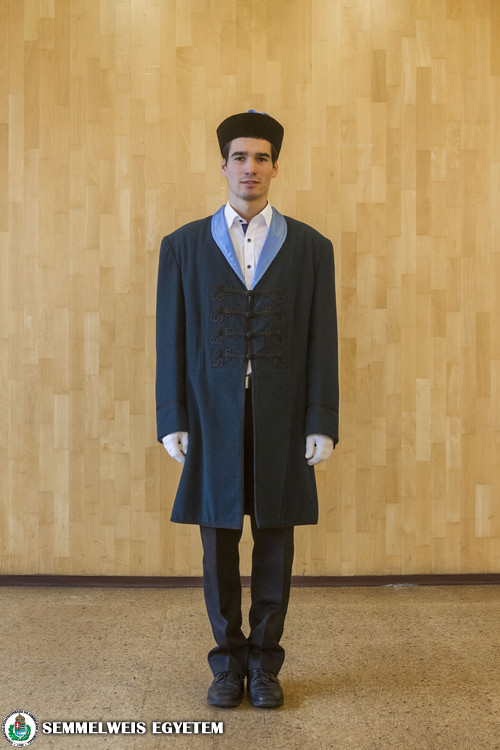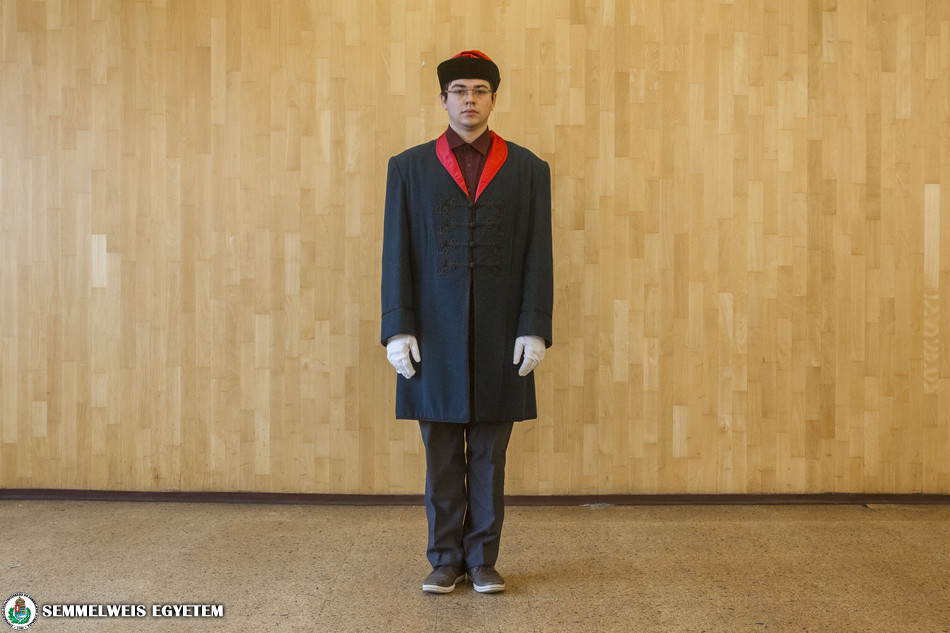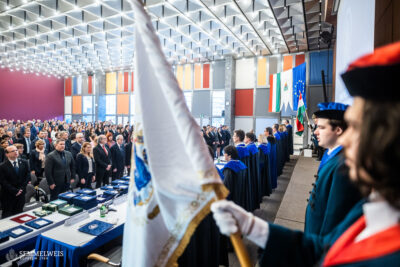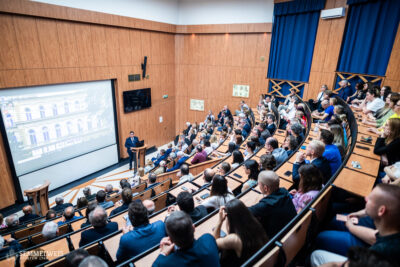“I joined the leadership of the Instructor Self-Active Group (IÖCS) three years ago, that was when I first learned about hajdús,” recalls Dr. Csaba Eke, who graduated earlier this year from the Faculty of Medicine (ÁOK). “When I joined the organization, I vowed to manage the entire recruitment process in a more organized, more structured way,” he said, adding that he always considered preserving heritage important, so it is a good feeling to nurture these old traditions as a hajdú.
[Editor’s note: Hajdú is the Hungarian word used to describe these liveried attendants who bear the university standard (banner) and other regalia, such as the sceptre and gowns. In English, it is sometimes used in the Hungarian plural form hajduk, with hajduks the plural, although there are also other spellings, such as haiduk or heyduck. The role of the hajdú is similar to that of the gonfaloniers, stemming from the Italian-origin word for a special style of university banners, called gonfalons. The Semmelweis banner is a traditional flag, however, so we will stick the Hungarian form of the word, hajdú, and refer to them as standard-bearers.]
Hajdús are usually the own students of the university, but the opportunity is also open for students of other universities, which is how Zsolt Keller, a student at the Budapest University of Technology and Economics (BME), became a hajdú at Semmelweis, after seeing a Facebook post by IÖCS. Keller joined the hajdús one year ago, and says that he immediately liked the entire vibe of the task. As a BME student, it is especially exciting to see how things go at another university. He noted that it was an enormous honor when at his first event, the Doctor Honoris Causa, he had the opportunity to shake hands with the rector and exchange a couple of words. As a hajdú, one can be present at internal university events where as an average student they would not be able to, and they can see the biggest ceremonies of the university from a unique vantage point, and have the opportunity to talk to deans or even the rector, experience the diploma ceremonies of the various faculties, gain unique experiences, while becoming a member of an excellent community, they both stressed.
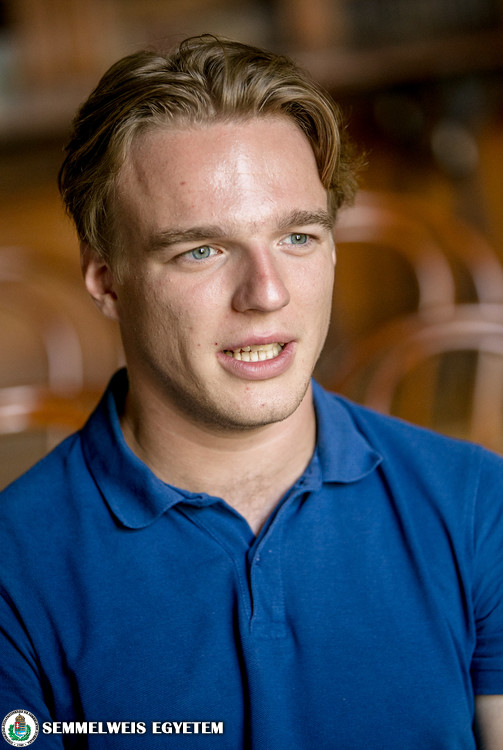 For Dr. Csaba Eke, it was a tremendous experience to take part in the inauguration ceremony of the new rector. “It was a great honor and an unforgettable experience that I was there and I saw the taking of the oath of office using the original sceptre,” he said.
For Dr. Csaba Eke, it was a tremendous experience to take part in the inauguration ceremony of the new rector. “It was a great honor and an unforgettable experience that I was there and I saw the taking of the oath of office using the original sceptre,” he said.
Anyone can apply to be a hajdú, the only requirement is that they be able to keep pace while marching, stand at attention, and be strong, Csaba noted with a smile. Zsolt added that many people are afraid that standing at attention for sometimes hours at end in ceremonial dress while holding the university’s symbols of dignity can be too much of a strain, but he said these ceremonies can take such a grip on a person that they don’t even feel the passage of time and before they realize it the event is over already. Csaba said, for example, that sitting behind the university’s leadership at the academic year’s opening ceremony and looking at the close to 3000 freshmen was a huge experience, “it gave me such an adrenaline rush that the two-hour event seemed to pass in just 10 minutes.”
The job of hajdús at central university events – opening ceremony of the academic year, Dies Academicus, Honoris Causa, Semmelweis Day, March 15 remembrance, diploma ceremonies – is to carry the university and the national flags, and depending on the type of event, the university’s various regalia (sceptre, chalice), marching ahead of the university’s leadership. This can often be quite stressful physically, as the flag is held by a metal rod weighing around 20 kg, and the sceptre, made of a mix of gold and silver, also weighs several kilograms. That is why they usually recommend that students acting as a hajdú for the first time not start with the university standard, because it is the heaviest. “Currently there are seven hajdús working in rotation at various events, but we are in need of more,” said Dr. Csaba Eke.
The two students have participated as hajdús at many events, but neither of them has carried the sceptre yet. This would be an enormous honor that they both would like to experience some day.
Dr. Csaba Eke graduated earlier this year from the Faculty Medicine, and is currently a PhD student at the Városmajor Heart and Vascular Center, while he also works half-time in the emergency ward of the Central Patient Care Building. Zsolt Keller is in his last year at BME, where he is studying to be a logistics engineer.
The history of hajdús has a long tradition. Before the war, they were called bedels (or pedells, from the Latin pedellus), school assistants whose role was similar to what it is today: they carried the pedum, i.e. sceptre ahead of academic dignitaries, while their ceremonial dress varied by historical period. Starting from 1861, bedels wore a green gown, while from 1870 on, in addition to the bedels carrying the pedum, ceremonial hussars accompanying the rectors and deans also appeared, who were selected from among the bedels. In 1899, their clothing was differentiated from those of the rector’s and dean’s hussars by using so-called heraldic dresses. Their ceremonial garb consisted of black trousers, a green pelisse (short jacket) with yellow cords and a Bocskai-adorned high fur cap. The lining of the pelisses and the caps differentiated their dress from those of the rector and the faculties. Today, the standard dress of the hajdús includes the pelisse and the cap, which are currently made in four colors: blue, red, green and white. In addition, they wear white gloves and shirts, as well as black trousers, socks and shoes.
You can watch our animated short film about the university’s regalia by clicking here.
Bernadett Bódi
Translation: Tamás Deme
Photo: Attila Kovács – Semmelweis University, Archival photo: Central Archives
Source: József Papp – Traditions and Memorabilia at Eötvös Loránd University of Science (Bp., 1982)
